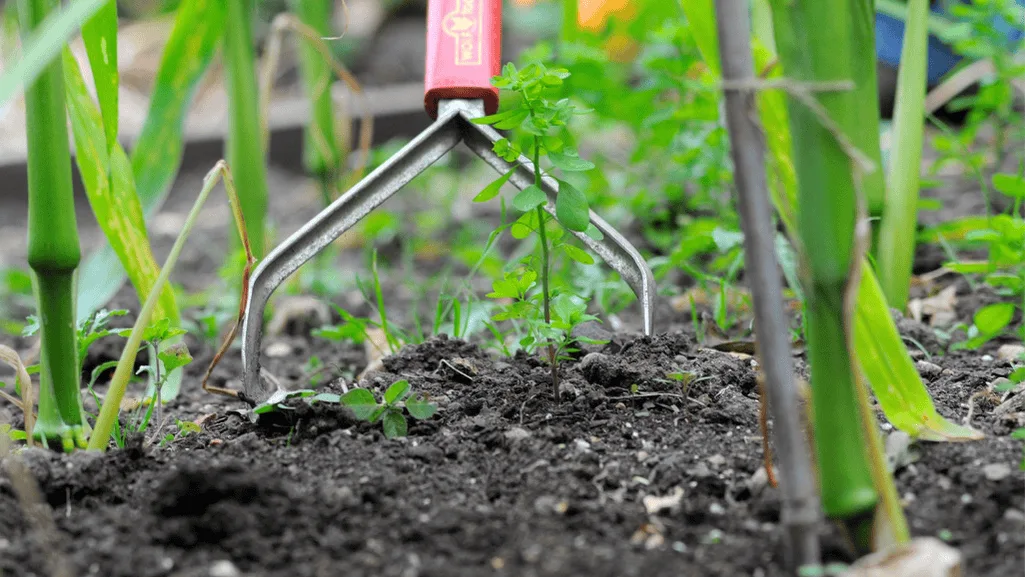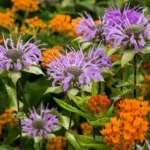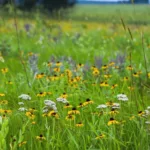
Beautiful flowers gardenia Plants For Your homes

Weeds are a big problem for gardeners. They take away nutrients, water, and sunlight from plants we want. To keep our gardens healthy, we need to use good weed removal techniques and a solid plan to control weeds. This article will show you how to get rid of weeds in your garden. We’ll look at organic ways and effective methods.
Weeding might not be fun, but it’s key for a beautiful garden. The best time to weed is from March to June when weeds are easy to spot. Weeding in short 15-minute sessions can make it feel less hard.
There are four main ways to remove weeds: hand weeding, mulching, using weed killers, and hoeing. Hand weeding is fast and effective. Work in small areas and cover them with mulch to slow weed growth. Remember, weeds will come back, so weeding is a regular task.
For neglected gardens, you might need to use more than one method. Sometimes, you might need a pro to get rid of a lot of weeds. Chemical and organic weed killers can help with tough weeds. But, think about how they might affect good soil life and other plants.
To keep your garden healthy, it’s key to know about weeds. Weeds are plants you don’t want, competing with your garden for water, nutrients, and space. If not controlled, weeds can take over, harming your plants’ growth and health.
Many weeds can invade your garden, each with its own traits. Some common ones include:
While some weeds like lamb’s quarters are edible, most gardeners want to keep them out. Knowing how different weeds grow helps in controlling them.
Weeds can outcompete your garden plants for resources. They spread quickly, taking up space and resources needed by your plants. Weeds fight for:
Uncontrolled weeds can lower your garden’s yield and quality. They also attract pests and diseases, harming your garden. It’s crucial to remove weeds to help your plants grow well.
Every square inch of your garden contains weed seeds, but only those in the top inch or two of soil get enough light to trigger germination. Digging and cultivating brings hidden weed seeds to the surface, where they can germinate and grow.
Knowing how weeds affect your garden and common types helps in fighting them. Use various weed control methods and tools to keep your garden healthy and full of life.
Timing is crucial for organic weed control. Removing weeds at the right time boosts your efforts and garden health. Knowing when to tackle weeds saves time and energy, leading to better results.
The saying “Pull when wet; hoe when dry” is spot on. After a rain, it’s best to pull weeds by hand. The moist soil makes it easier to remove them completely. For tough weeds, a lawn weed killer might be needed.
When it’s dry, weeds die quickly if you cut them off just below the soil. A sharp hoe works best in hot, dry weather. This method dries out weeds fast.
Stopping weed seeds from germinating is key. Good soil preparation and mulch or ground covers help a lot.
Deadheading weeds stops them from spreading. Removing flower heads prevents seed dispersal. Cutting back perennial weeds limits their spread.
Consistency is key when it comes to weed control. Regularly removing weeds before they have a chance to mature and spread will make the task more manageable in the long run.
Using organic weed control methods like mulching and ground covers helps. Focus on prevention and timely removal for a weed-free garden all season.
Hand-pulling weeds is a top way to get rid of unwanted plants without hurting your garden. It takes time, but it lets you remove weeds carefully. This keeps your garden healthy and growing well.
To weed more efficiently, use the right tools. A sharp, narrow trowel or dandelion weeder helps pull out weeds easily. Tools like a Japanese Hori Hori knife, patio knife, and hand fork are also helpful.
Before pulling weeds, loosen the soil first. This ensures you get the whole weed, including the roots. Avoid grabbing or ripping weeds, as this can cause them to grow back. Take your time to pull out the weed completely.
Weeds with deep taproots, like dandelions, are hard to remove. Use a sharp tool to loosen the soil around the taproot. Work down as deep as you can to remove as much root as possible.
Organic gardeners use many ways to control weeds without chemicals. Mulching blocks sunlight and stops weeds. Newspapers or cardboard, topped with mulch, also work well for a while.
Hand weeding is just one part of weed control. Mulching, using organic herbicides, and careful cultivation also help. By combining these methods, you can keep your garden weed-free and your plants healthy.
Using mulch is a top way to fight weeds in your garden. It not only stops weeds but also keeps the soil moist and at the right temperature. This makes your plants healthier. By using mulch right, you’ll spend less time weeding.
Choose organic mulches like shredded leaves, straw, or wood chips for weed control. They block sunlight and make the soil better as they break down. Gravel or stones work too, but they don’t help the soil as much. Landscape fabric can act as a barrier under mulch, lasting 2 to 5 years.
For best results, use 2 to 3 inches of mulch. Start by removing weeds and debris. You can also use newspaper or cardboard to block light before adding mulch. Make sure to leave space around plants to avoid rot.
Think about your plants when mulching. Flowers Gardenia says some plants need special care. Find out the best way to mulch for your plants.
Keep your mulch layer topped up during the growing season. Organic mulches should be about 2 inches deep. Don’t let it get too thick, as it can harm your plants. Watch for weeds and remove them quickly.
Mulch is great for weed control, but it’s not foolproof. Use it with other methods like hand weeding and hoes for a weed-free garden.
More gardeners are turning away from synthetic chemicals and towards organic weed control. Natural weed killers, companion planting, and ground covers help manage weeds without harming soil or plants. These methods are safe and good for the environment.
There are many natural weed killers you can use. Boiling water, vinegar, and salt work well for spot treatments. But, use them carefully to avoid harming your soil and other plants. When used right, these natural options can control weeds without chemicals.
Companion planting is a great way to fight weeds. Planting densely and using polycultures shades the soil, stopping weeds from growing. Try planting 25% closer than usual to get the best results. For more on this, check out this article on cold hardiness.
Ground covers and fast-growing plants beat weeds by covering the soil. They stop weed seeds from getting light and resources. Use plants like clover to fill gaps and keep weeds away. Make sure your ground covers can handle your local climate.
Using organic weed control methods makes your garden healthier and more sustainable. Natural weed killers, companion planting, and ground covers manage weeds well. They also help your soil and plants thrive.
Preventing weeds is key in lawn and garden maintenance. It helps keep your garden healthy and weed-free. By using the right strategies, you can avoid constant weeding.
One good strategy is to avoid digging too much. Weed seeds can stay dormant for years, waiting to grow. By not digging, you stop these seeds from sprouting.
Optimizing your watering is also effective. Weeds like moist soil. Use drip irrigation to water your plants directly, starving weeds of water. This can cut weed seed germination by 50-70%.
After 8 years of using organic mulches and no-till methods, a farm achieved nearly weed-free, rich soil. The watering needs for their vegetable garden were reduced to once a month in the summer due to the mulch retaining moisture.
Improving soil health is vital for weed control. Add organic matter and compost regularly. This makes your soil less welcoming to weeds, promoting your plants instead.
Mulching is a great way to fight weeds. It keeps the soil moist, feeds plants, and improves soil quality. Organic mulches, like straw, block sunlight and attract beneficial insects. Inorganic mulches also work well with proper spacing.
Stick to these strategies for a weed-free garden. Add organic matter, mulch, and water smartly. Consistency is crucial for a beautiful, weed-free garden.
Controlling weeds in your garden needs a mix of timing, the right weeds tools, and various methods. Hand weeding, mulching, and organic methods are all useful. By removing weeds before they seed, you stop them from spreading.
Knowing how to identify weeds helps you choose the best way to get rid of them. This way, you can tackle each weed problem effectively.
Using raised bed gardening for weed management is also smart. It lets you control the soil and spot weeds easily. For big areas or tough weeds, the right tools like a hoe or weed puller are essential. They make the job quicker and easier.
Being consistent and proactive is crucial for a weed-free garden. With the right approach and tools, you can have a garden that looks great and needs less weeding. By sticking to regular weed control, you’ll have a garden that’s both beautiful and healthy.




